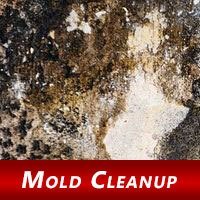Tips to Prevent Post-Flooding Mold at Home

Tips to Prevent Post-Flooding Mold at Home: Clean It, Dry It or Discard It
Recovery specialists are offering some sound advice for Louisianians whose homes and property were hit by Hurricane Isaac: Protect your family’s health and your own by treating or discarding mold- and mildew-infected items.
Health experts urge those who find mold to act fast. Cleaning mold quickly and properly is essential for a healthy home, especially for people who suffer from allergies and asthma, said the Federal Emergency Management Agency (FEMA).
Mold and mildew can start growing within 24 hours after a flood, and can lurk throughout a home, from the attic to the basement and crawl spaces. The best defense is to clean, dry or, as a last resort, discard moldy items.
Although it can be hard to get rid of a favorite chair, a child’s doll or any other precious treasure to safeguard the well-being of your loved ones, a top-to-bottom home cleanup is your best defense, according to the experts.
Many materials are prone to developing mold if they are damp or wet for too long. Start a post-flood cleanup by sorting all items exposed to floodwaters:
- Wood and upholstered furniture, and other porous materials can trap mold and may need to be discarded.
- Glass, plastic and metal objects and other items made of hardened or nonporous materials can often be cleaned, disinfected and reused.
- Carpeting is a problem because drying it out does not remove mold spores. Carpets with mold and mildew should be removed.
For more information visit http://www.fema.gov/news-release/2012/09/07/tips-prevent-post-flooding-mold-home-clean-it-dry-it-or-discard-it

